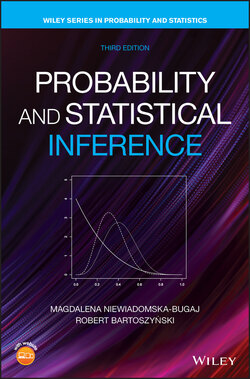Читать книгу Probability and Statistical Inference - Robert Bartoszynski - Страница 92
Example 3.13 Poker
ОглавлениеWe now consider the probabilities of several poker hands (some students will probably say that finally the book gives some useful information).
In poker, five cards are dealt to a player from a standard deck of 52 cards. The number of possible hands is therefore . The lowest type of hand is that containing one pair (two cards of the same denomination, plus three unmatched cards). To find the number of possible hands containing one pair, one can think in terms of consecutive choices leading to such a hand:
1 The denomination of the cards in a pair can be chosen in ways.
2 The suits of the pair can be chosen in ways.
3 The choice of denominations of the remaining three cards can be made in ways.
4 The suits of those three cards may be chosen in ways. Altogether, combining (a)–(d), we have
The next kind of hand is the one containing two pairs. Here the argument is as follows:
1 The denominations of the two pairs can be selected in ways.
2 The suits of cards in these two pairs can be selected in ways.
3 The remaining card may be chosen in ways (two denominations are eliminated).
Combining (a)–(c), we have
Finally, we calculate the probability of a straight (probabilities of remaining hands are left as exercise). A straight is defined as a hand containing five cards in consecutive denominations but not of the same suit (e.g., 9, 10, jack, queen, and king). An ace can appear at either end, so we could have a straight of the form ace, 2, 3, 4, 5, as well as 10, jack, queen, king, ace.
The number of hands with a straight can be computed as follows: Each such hand is uniquely determined by the lowest denomination (ace, ) in 10 ways. Then, the suits of five cards are chosen in ways: is the total number of choices of suits, and we subtract 4 selections in which all cards are of the same suit. Thus,
